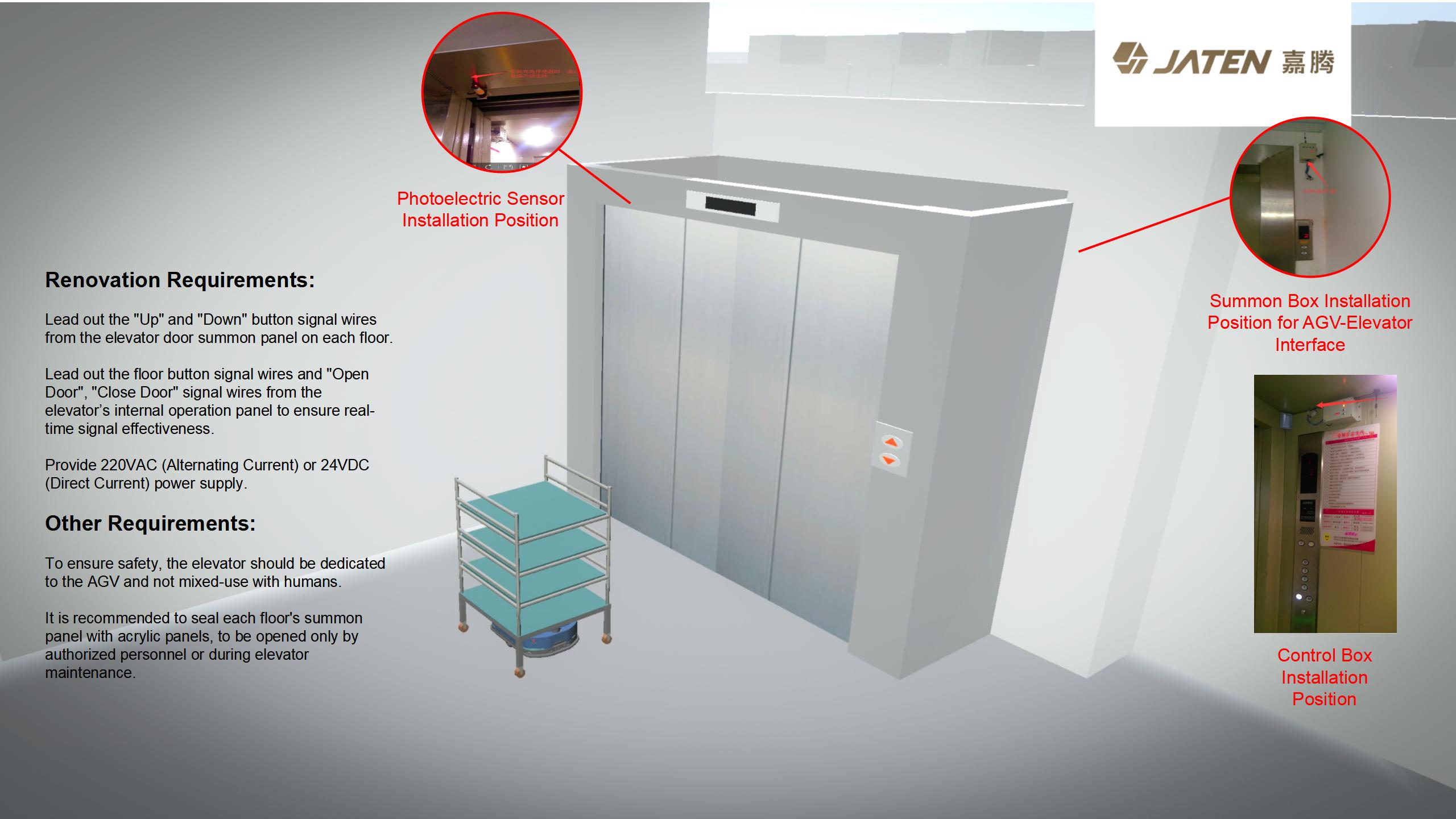



The goal of the inverter production plant warehouse and logistics project is to fully automate the production process, covering the entire workflow from raw material inbound to finished product outbound. The cross-floor collaboration challenge requires AGVs to seamlessly transition between complex multi-floor environments, facing issues such as path planning conflicts and communication delays. Strict environmental adaptation requirements include floor flatness ≤ 3mm, temperature and humidity control between 0°C and 45°C, and compliance with anti-static standards, as failure to meet these specifications can impact AGV operational stability. Additionally, the risk of multi-system compatibility cannot be overlooked. During integration with third-party devices such as visual inspection systems and automatic doors, issues like communication protocol incompatibility or system linkage failure often occur. Traditional material handling heavily relies on manual operation, which is inefficient and error-prone. Therefore, automation is necessary to achieve zero errors and high-precision operations. As operational intensity increases, 24/7 continuous operation places higher demands on equipment durability, fault response speed, and spare parts management, further exacerbating the operational pressure. To address these challenges, the factory has introduced JATEN robots, which include equipment such as racks, material shelves, mobile AGVs, bin AGVs, tugs, overhead roller conveyors, palletizing robots, reciprocating lifts, continuous lifts, narrow-aisle three-way forklifts, stacker cranes, material trolleys, and more. The project also includes supporting logistics software systems and a Warehouse Management System (WMS).

System Architecture
Manual operators push production line information to the WMS system via PDA or MES system. The WMS/WCS system then issues task instructions to the AGV dispatch system.
The AGV dispatch system schedules AGVs to execute tasks, and once completed, the AGV dispatch system sends task completion feedback to the WMS, which then updates the MES system.
System Interface and Communication.The WMS supports API, Webservice, and database middleware interfaces with the customer's MES/ERP system. Specific interfaces will be determined through communication between both parties' engineers.
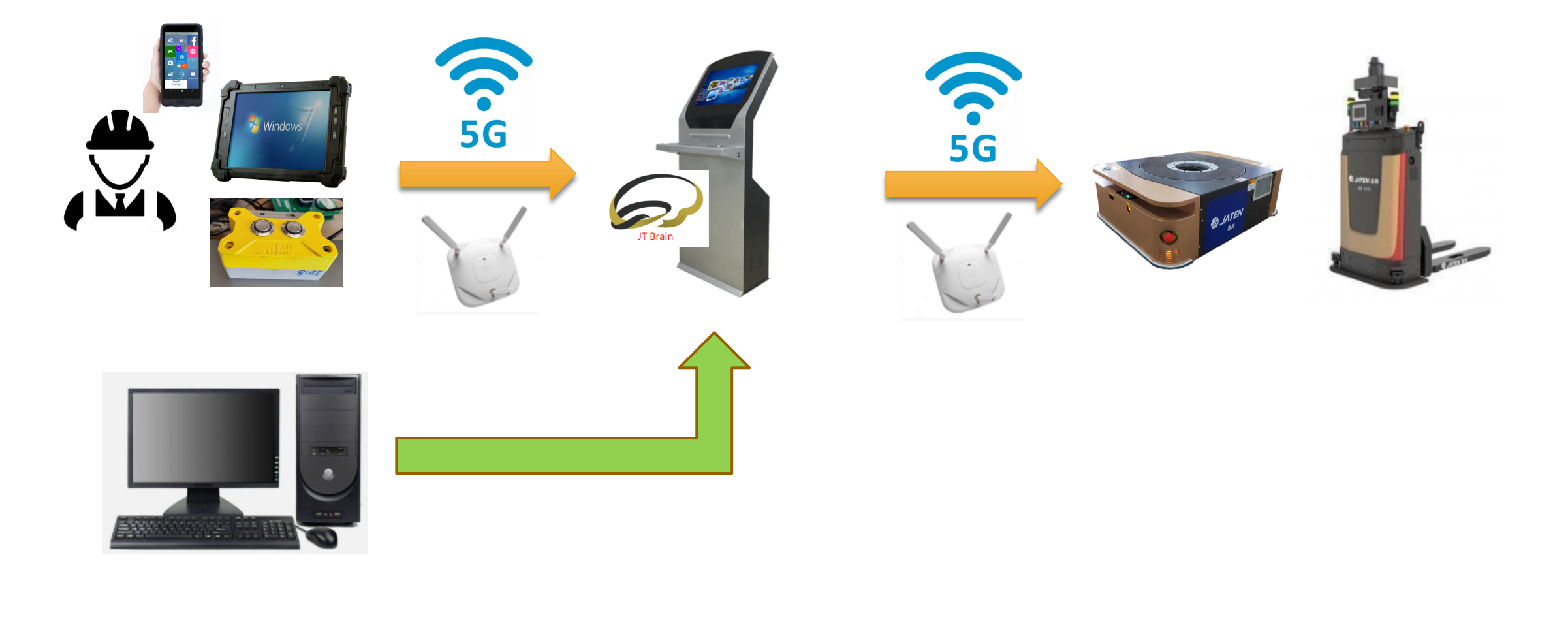
Physical System Connections
Manual operators initiate call signals to AGVs using handheld PDAs, tablets, or call boxes.
The upper-level system host is connected to the AGV industrial control machine via wired communication, and the upper-level system sends call signals to the AGV dispatch system.
The call signal is received by the AGV dispatch system, which then schedules the AGV to complete the task. After the task is completed, the AGV dispatch system receives feedback from the AGV.
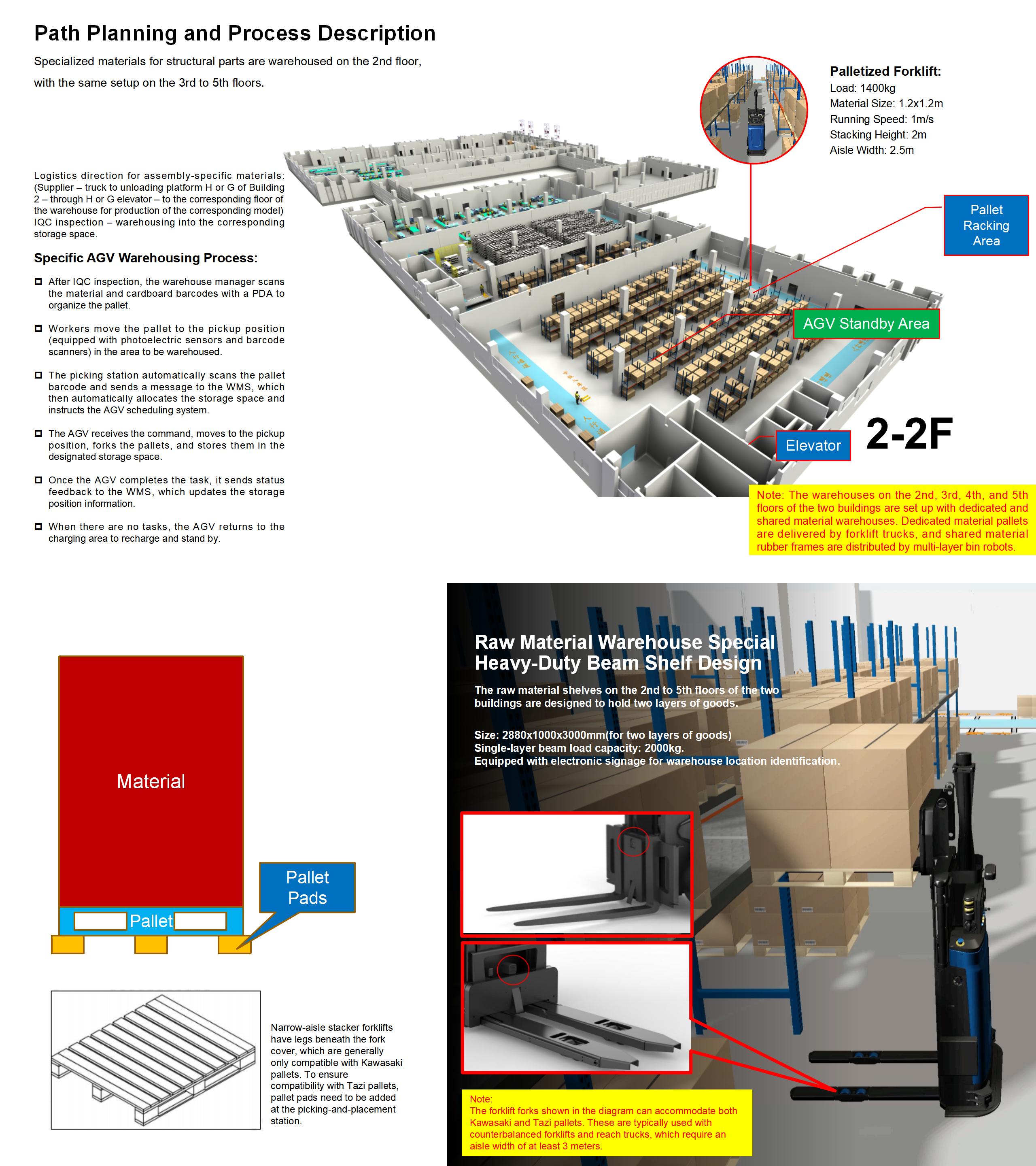
Grid Pallet Pads
Due to the two different types of pallets used for incoming raw materials—Kawasaki and Tazi—narrow-aisle stacker forklift AGVs must be able to adapt to both types of pallets. To achieve this, pallet pads are installed at the picking position, allowing the forklift legs to enter smoothly (as shown in the diagram above).
The pallet pads are made by welding 100x50x3 square tubes and 8mm plates together, using Q235 steel with a painted surface.
The pallet pads are designed to accommodate palletized goods with the following specifications: 1200x1200x2000mm, and have a load capacity of 1000kg.
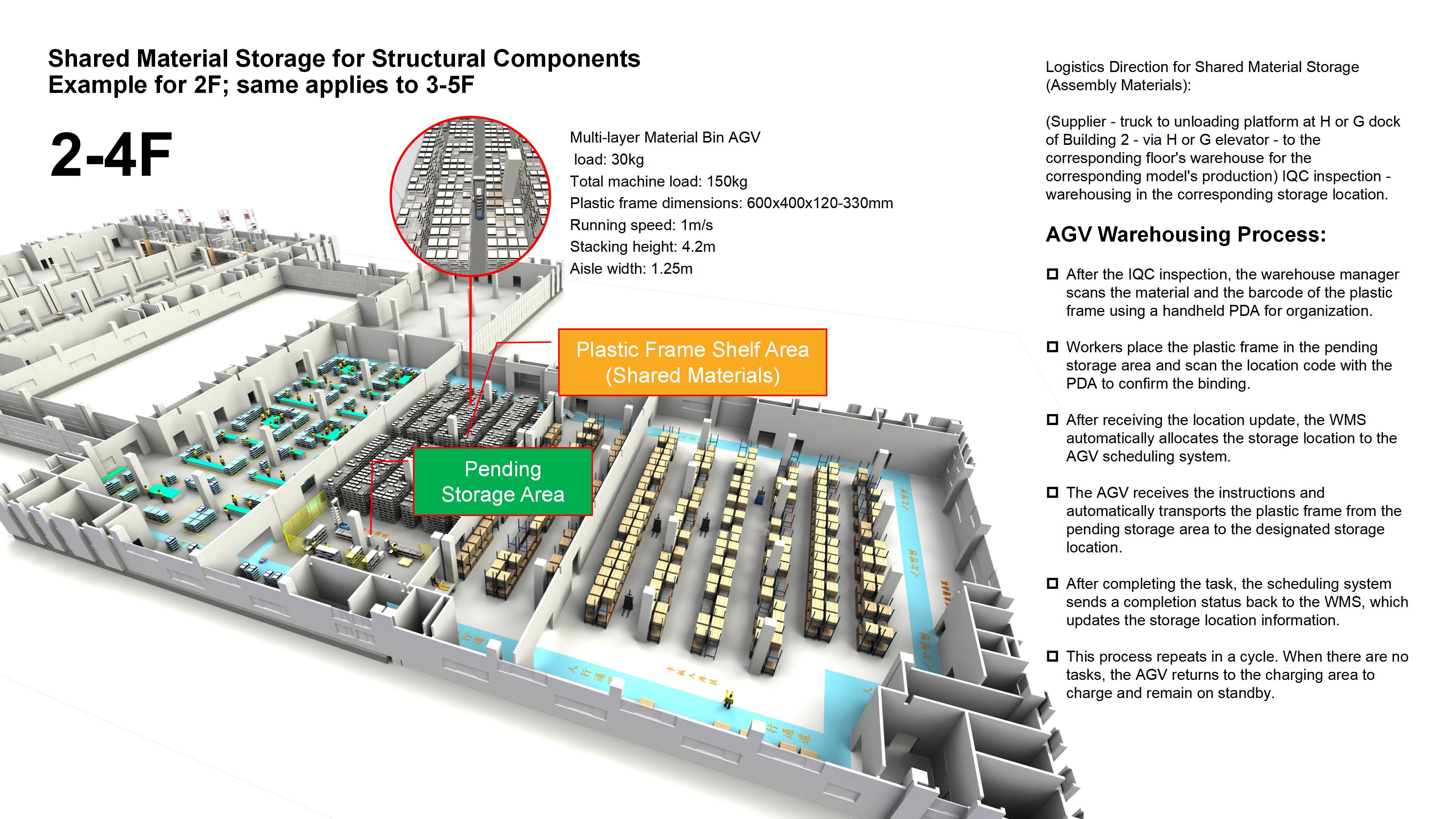
Warehousing Sorting Station (2F)
Conveyor Workstation:
The warehousing sorting station uses a dual-layer conveyor system: the upper layer transports empty plastic frames, while the lower layer transports full plastic frames. The conveyor system provides an ergonomic picking process, where personnel do not need to walk. A buffer is left between manual picking and robot operation to reduce waiting time and greatly improve the workstation's efficiency.
Outbound Sorting Station
Buffer Shelf Workstation:
The warehousing workstation uses buffer shelves. Both personnel and robots work concurrently on the buffer shelves, ensuring efficiency while maintaining safety. Custom safety and positioning structures are in place to guarantee stable system operation.
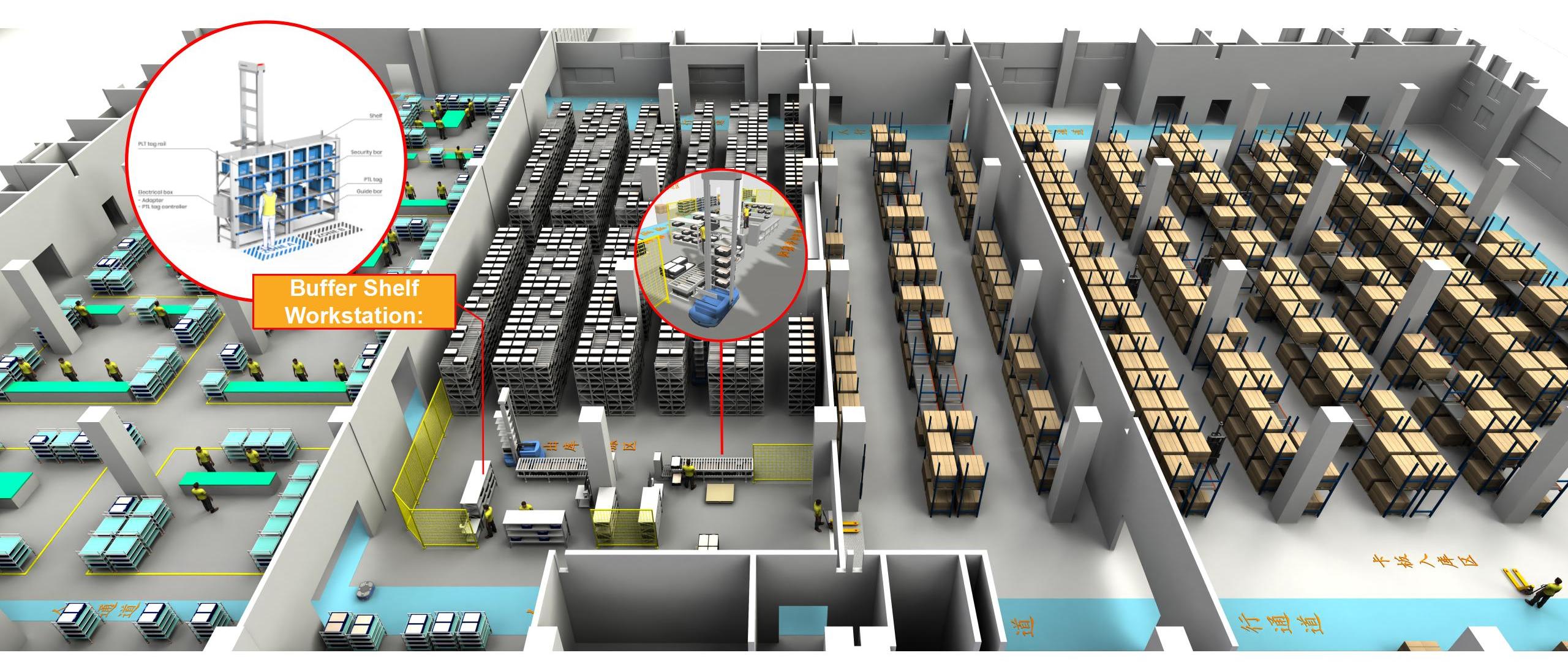
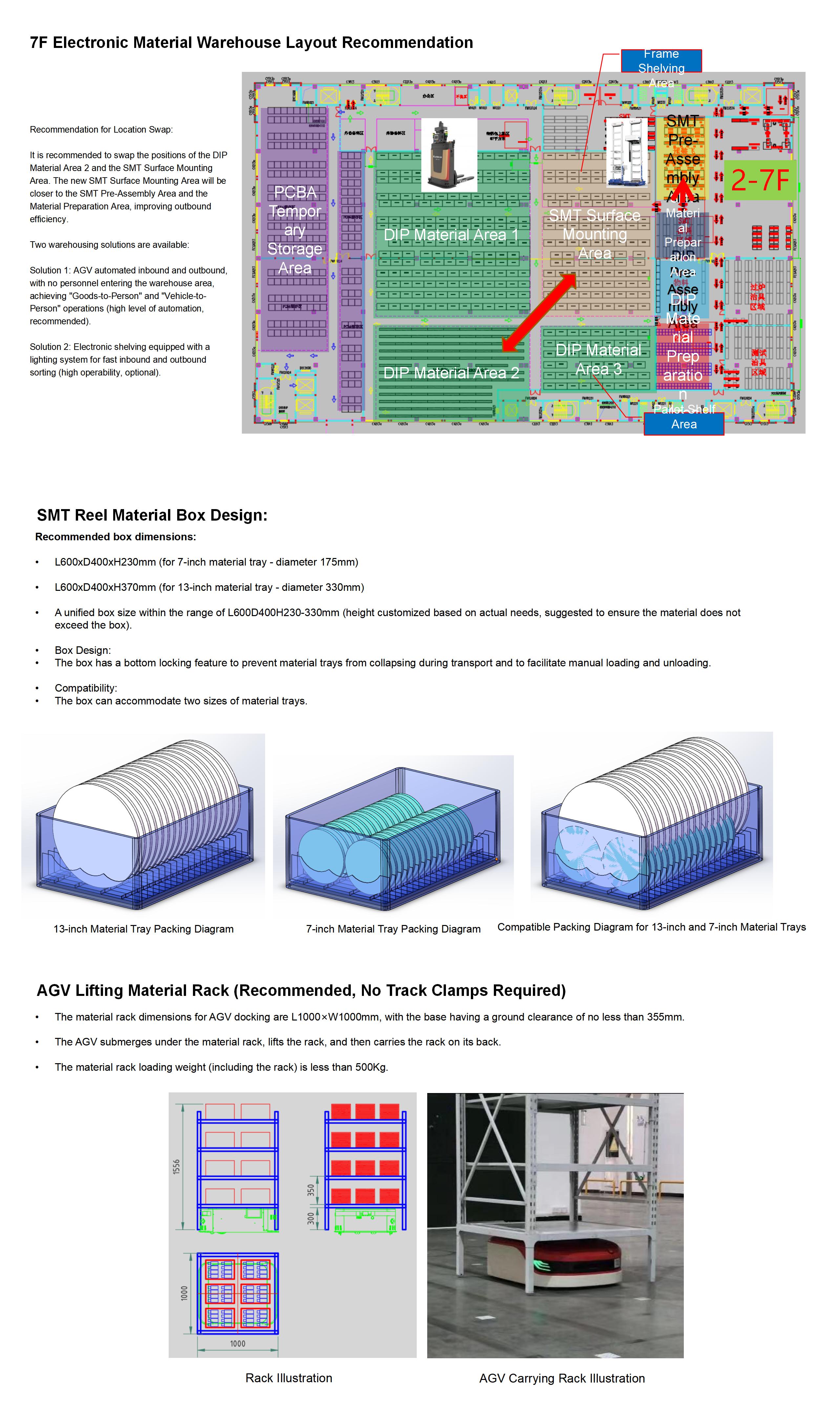
Truss-Type Stacking Line Overall Layout
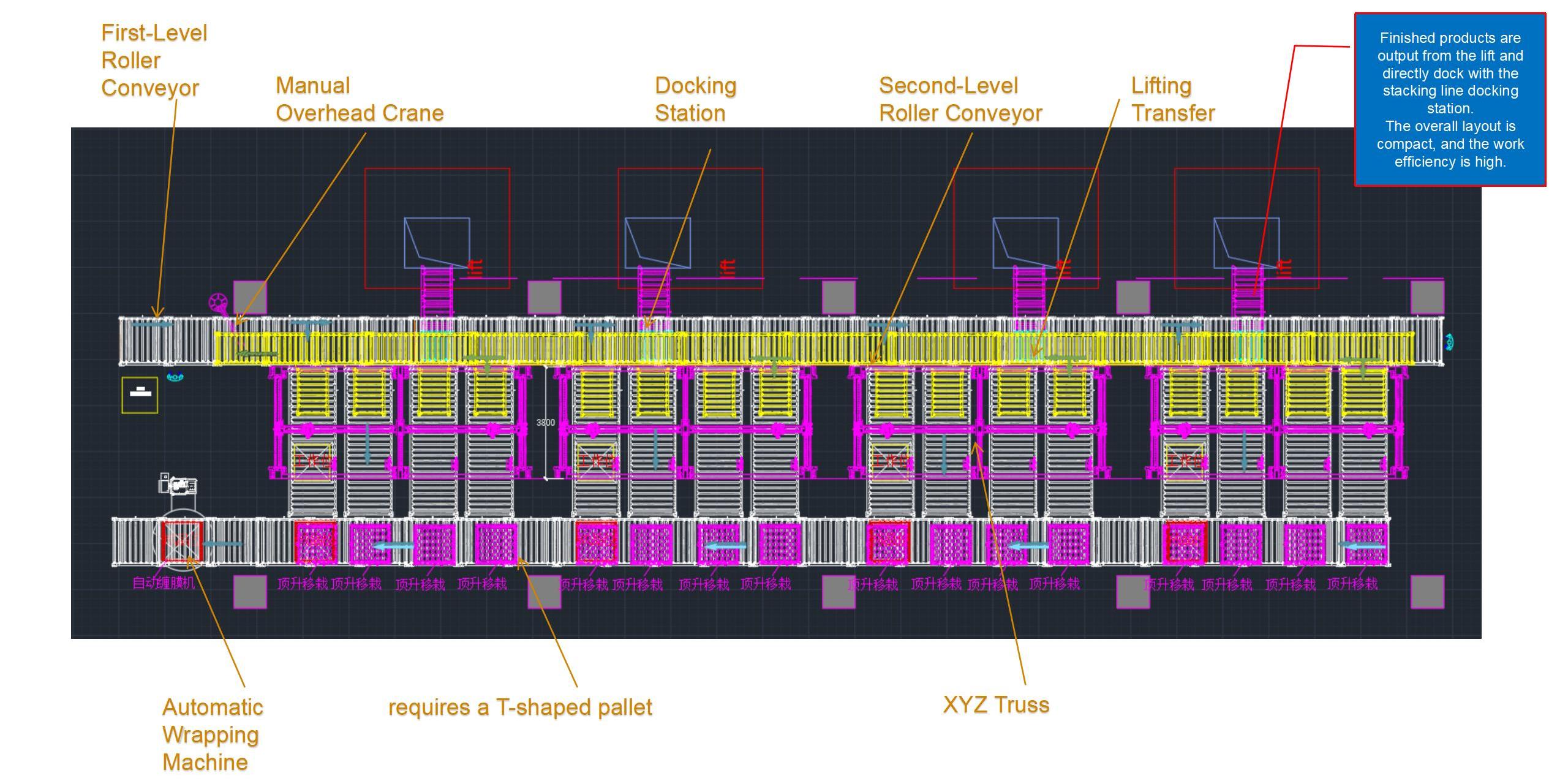

Elevator Communication Solution:
Forklift AGVs need to interface with elevators for cross-floor material transport, so the elevator must be equipped with the wireless communication module provided by our company. This module acts as the AGV’s elevator assistant by simulating human hand operations using relay contact switches. It only controls the touch panel contact signals of the elevator’s control buttons without affecting the elevator's original electrical system, ensuring the AGV can communicate with the elevator.
The elevator uses a photoelectric sensor to detect whether the door is fully open, preventing collisions between the AGV and the elevator doors, ensuring safety and reliability.
